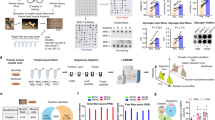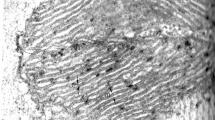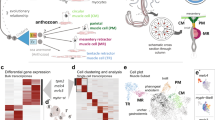Abstract
IT has not been possible hitherto to separate muscle cell contents from the cell walls and the extracellular fluid1,2, so that important factors, such as the concentration of intracellular electrolytes, have had to be arrived at indirectly. The number of workers who have resorted to studying the diffusion -rates of electrolytes into or out of whole muscles in lieu of direct determination is an indication of the wide interest in this field.
This is a preview of subscription content, access via your institution
Access options
Subscribe to this journal
Receive 51 print issues and online access
$199.00 per year
only $3.90 per issue
Buy this article
- Purchase on SpringerLink
- Instant access to full article PDF
Prices may be subject to local taxes which are calculated during checkout
Similar content being viewed by others
References
Dickerson, J. W. T., and Widdowson, E. M., Biochem. J., 74, 247 (1960).
Manery, J. F., Physiol. Rev., 34, 334 (1954).
Love, R. M., J. Sci. Food Agric., 9, 195 (1958).
Love, R. M., Nature, 185, 692 (1960).
Steinbach, H. B., and Spiegelman, S., J. Cell Comp. Physiol., 22, 187 (1943).
Reid, A. F., Caldwell, R. L., and Vanatta, J. C., Arch. Biochem., 84, 498 (1959).
Author information
Authors and Affiliations
Rights and permissions
About this article
Cite this article
LOVE, R. Isolation of and Direct Analysis of Uncontaminated Muscle Cell Contents. Nature 196, 593–594 (1962). https://doi.org/10.1038/196593a0
Issue date:
DOI: https://doi.org/10.1038/196593a0



